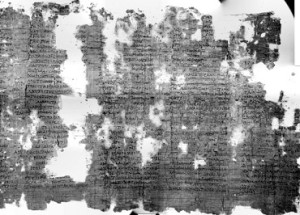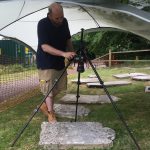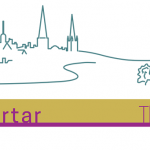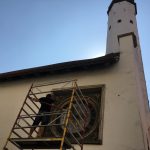Having recently read an article on the BBC new’s page about the artefacts from the British Museum’s Life and Death: Pompeii and Herculaneum exhibition it led to a belief of how integral RTI could be within the research of the scrolls of Herculaneum. The scrolls have been greatly damaged and are very delicate, reading the writing on these enclosed scrolls is therefore very difficult to do not only because of their state but because they are also as black as burnt newspaper. Some of the scrolls have been opened and have been analysed under multispectral imaging with the below image showing the potential of this technique within the identification of the writing.

Credit: BBC Multispectral image of an opened scroll
The article continues to develop on the virtual examination of these scrolls using CT scanning (something that Archaeovision has experience in) in unwrapping the scrolls within a virtual environment, eradicating the damage that may occur within the manual process of opening them. The downside to this technique is the expense associated with recording the scrolls at the resolution needed to identify the writing. Unwinding the scrolls in a virtual package is straightforward but the scientists associated with the project have found it difficult to extract the writing due to the lack of metal within the ink. This is where is RTI can play an integral part within their study. The members of Archaeovision have experience in extracting CT data and examining the dataset under a virtual RTI setup. It was used by James Miles within the examination of the coins of the Selby Hoard with more information about the work found on the ACRG’s blog but in essence he was able to identify a vast number of coin types using this method.
As the scientists within this project are finding it hard to identify the writing, the same set up could be used to help identify the writing. There is a need to produce a CT scan that has a resolution of at least 50 microns in order that all of the writing is recorded as CT data can miss important sections with lower resolutions. With this high resolution dataset the scroll could be virtual unwrapped and examined under virtual RTI in key sections. RTI works on the examination of subtle surface differences, that is to say, differences in surface detail can be easily identified using this technique. As with any writing, the scrolls would have an inherent indentation, that would be present within the parchment and could be exaggerated within a virtual environment . Using a virtual RTI would then help within this examination and avoid having to scientifically identify the ink. It would create a system that would allow for a purely virtual examination and it would avoid the risk of damaging the scrolls further. This being said CT scanning is an expensive process and if a new method of opening the scrolls were created that avoided damaging them, then multispectral RTI could be used. It would follow much the same method that is currently used but it would allow for a further examination of the writing and allow for a clearer understanding within their analysis and should now be used on the already opened scrolls.
The work identified in the news article is very interesting but there is always room for further examination within these important archaeological remains and it is hoped that RTI could one day become an important part within the research of these scrolls.




